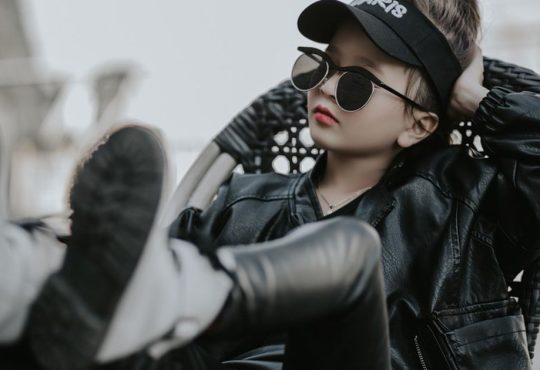From the workshops of his hometown to prestigious installations in China, Korea, and Italy, Cui has spent more than 20 years developing a distinctive voice in marble sculpture that honors tradition while forging a modern identity. As his art attracts wider international attention, his story emerges rooted in discipline, connection to nature, and a relentless pursuit of beauty through form.
Early Impressions: The Sculptor Within
Cui Xiao Gang’s journey toward sculptural mastery began far from formal studios or academic halls—it took root in the stone-filled courtyards of Quyang, where centuries of tradition echoed through the sound of chisels and quiet concentration. From an early age, he was immersed in an environment where carving was part of everyday life, and it quickly became clear that he possessed a rare and instinctive understanding of form. Drawing came to him as effortlessly as speech, a natural extension of how he perceived the world. More than just lines on paper, his sketches revealed an early grasp of spatial logic—the ability to imagine a finished sculpture residing within the contours of a raw stone block.
Under his father’s and uncle’s guidance, both seasoned stone carvers, Cui absorbed the foundational techniques of Chinese stone artistry, part of a legacy that stretches back to the Han Dynasty. Yet even while rooted in tradition, he was never content with repetition. From an early age, he showed a restless drive to experiment—testing unfamiliar tools, modifying traditional methods, and exploring new compositional possibilities. This blend of inherited knowledge and fearless curiosity defined his artistic evolution. Through years of focused, often solitary practice, he moved beyond technical competence. What emerged was not just a skilled craftsman, but an artist with a voice who could channel precision and feeling into the enduring language of stone.
Language of Marble Art
While many sculptors work across materials, Cui has developed an almost monastic devotion to marble. To him, each slab of stone is not just a blank canvas, but a living archive of time and nature. He is known for saying that marble “remembers the earth,” and it is through his hands that this memory is revealed.
Cui has spent years studying the geological origins of marble, delving into how mineral deposits form the veins, colors, and translucent properties that make each block unique. He doesn’t see these as flaws but as narratives—elements that guide and inspire his design choices.
Understanding the physical properties of various marbles—from Carrara in Italy to Chinese Hanbaiyu—has enabled him to adapt his carving techniques rapidly. For dense marble, he employs specialized chisels and controlled force. He uses subtle finishing techniques for translucent varieties to let light dance across surfaces, creating effects that range from ethereal to monumental.
His artistic process is deeply intuitive yet technically exacting. Before touching a tool, Cui spends time “communing” with the stone, absorbing its natural rhythm and imagining the form it might yield. This dialogue between artist and material is central to his practice. He believes actual sculpture doesn’t overpower its medium—it reveals it.
Unwavering Standards: Sourcing and Quality
Central to Cui Xiao Gang’s success is his uncompromising commitment to quality. Every detail is intentional, from the type of stone he uses to the final surface polish. He is known to reject entire shipments of marble if the material does not meet his criteria, regardless of cost or delay.
His preference for high-grade marble is not only aesthetic but also philosophical. For Cui, the use of superior materials reflects the very integrity of the artwork. They ensure durability, visual harmony, and a stronger emotional connection with the viewer.
He often travels to inspect quarries personally, selecting pieces based on grain, color, depth, and the potential for interaction with light. This rigorous material selection process has earned him the trust of high-profile clients who value longevity, symbolism, and precision in art.
Sculptures That Speak: International Highlights
Cui’s rising prominence has brought forth a range of commissions that reflect his adaptability and broad international resonance. His works move fluidly across settings—from sleek, modern corporate spaces to peaceful European landscapes—while maintaining a consistent artistic voice. In each context, his sculptures speak through form, not words, expressing a quiet sense of balance and serenity that transcends cultural boundaries and architectural styles. The second piece, a reclining figure cradled in a hammock, captures a moment of stillness, delicately poised between introspection and repose.
Huawei Headquarters, Shenzhen, China
Two of his most acclaimed works within China are monumental marble sculptures installed at the Huawei campus in Shenzhen. One depicts a tall, poised female figure, capturing elegance and resilience. The other features a reclining form gently cradled in a hammock, evoking a tranquil moment between contemplation and calm. These pieces serve as visual anchors within Huawei’s architectural space and meditative symbols amid the hustle of a tech-driven environment.
The First Garden, Paju City, South Korea
In South Korea, Cui significantly contributed to The First Garden, a vast cultural destination in Paju City renowned for its 23 distinct themed areas. His marble sculptures and fountains, thoughtfully placed across the grounds, blend natural elements with human-centered themes, enriching the atmosphere with emotional depth and connection. His work underscores a central belief: art should be admired, felt, and engaged. His fountains, in particular, use the interplay of stone and water to evoke movement and sound in otherwise still forms. contributed
Parrocchia S. Maria Assunta in Cielo, Avellino, Italy
Cui’s ability to convey spirituality through sculpture found a natural home in the Parish of Santa Maria Assunta in Cielo in Italy. His works for the church include symbolic religious motifs carved in clean, contemporary forms that resonate with centuries-old ecclesiastical architecture.
Blending restraint with reverence, these pieces have been praised for creating a sacred ambiance without overpowering the space.
2025 Installation at Giardino Ducale Sorricchio, Atri, Italy
One of the most anticipated displays of Cui’s work will take place in 2025, when several of his sculptures will be featured in the Giardino Ducale Nicola e Luigi Sorricchio in Atri, Italy. The historic garden, known for its Roman-era foundations and refined landscaping, is set to feature Cui’s marble works as part of a broader cultural effort to bring international contemporary sculpture into dialogue with heritage-rich settings.
This project represents a defining moment in Cui’s artistic journey, highlighting his evolving vision and growing international presence. It cements his status as an artist of international stature and allows him to contribute to a centuries-old artistic dialogue in one of Europe’s cultural capitals.
Shaping Tomorrow: Teaching, Mentorship, and Enduring Impact
Even as his reputation grows beyond national borders, Cui Xiao Gang remains deeply committed to his roots in Quyang. His presence in the town is not just symbolic—it is purposeful. Here, surrounded by the same stone-carving traditions that shaped his path, he dedicates time to mentoring young artists and promoting the preservation of this ancient craft. For Cui, being an artist carries a responsibility not only to create, but to teach—to ensure that the knowledge, discipline, and cultural value of stone carving endure through future generations.
In recent years, his efforts have taken shape through local workshops and community-driven programs, where aspiring sculptors are given guidance and inspiration. These sessions go beyond technical instruction and reflect Cui’s philosophy of artmaking as a mindful practice. He teaches his students to work patiently, understand and respect the material they carve, and cultivate a sense of inner stillness. This mental clarity allows the sculpture to emerge naturally from the stone.
Looking forward, Cui aims to expand the role of sculpture in contemporary life by exploring collaborations with architects and designers. His vision is to dissolve the boundary between sculpture and space, embedding art into the everyday fabric of public and private environments. Whether in parks, buildings, or communal areas, he imagines sculptures that do more than decorate—they participate. His future projects are shaped by the belief that art should influence how people experience their surroundings: pause, move, gather, and reflect. Through this evolving approach, Cui continues to carve stone and the future of the tradition itself.
Carving Stillness in a Rushed World
Cui Xiao Gang’s sculptures are not simply representations of the human figure. They go beyond portraying the human figure and serve as profound reflections of the human journey and emotional experience. Every curve and texture becomes a quiet narrative, speaking of presence, echoing memory, and holding space for silence. His work is a peaceful resistance to the fast pace of modern life, inviting us to pause and see the eternal in the ephemeral.
In a world that increasingly celebrates speed and impermanence, Cui’s art reminds us of something more profound: that beauty can endure when carved with care and intention. It can hold meaning for future generations, not just for this moment.
And so, from the marble-rich valleys of Hebei to the gardens of Italy and beyond, Cui Xiao Gang continues to shape not only stone but also the very future of contemporary sculpture.





